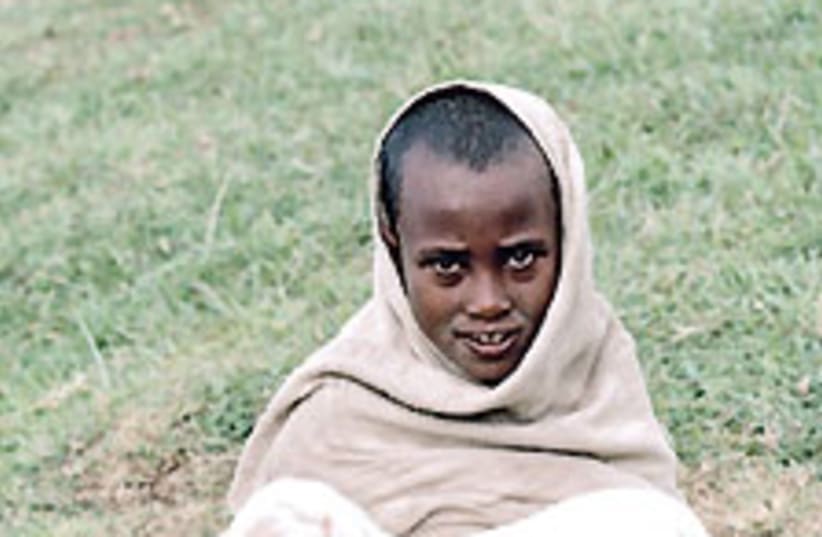From shepherds to students and beyond
What makes a successful program for turning one-time shepherds into high-school graduates?
The young Ethiopian men sitting in my English class at Or M'Ofir, a pre-military preparatory program at Rabbi Chaim Druckman's Ohr-Etzion Bnei Akiva Yeshiva, present me with a challenge greater than merely teaching non-English speakers to read and write this complex language. Usually, bridging the gap between the mother tongue of any student and the target language is challenge enough. But the enormity of the gap between the target language and the background of this student population is more than merely challenging. It is daunting, awe-inspiring and certainly motivating.
Shepherding was the common pre-immigration occupation of the 18 to 26-year-old Ethiopian boys and men in my classes. A résumé for these shepherds might list several positive characteristics: self-motivated, highly responsible, focused, caring. This same résumé might include accomplishments such as "coming in on time and under budget," "managed flock with no loss of life" and "successful team player." The shepherd participated in family life, fulfilling its expectations of him. He knew his worth and gained respect by doing his job well. He was on equal footing with other members of the family, who also fulfilled their responsibilities appropriately, enabling him to do the same.
The same shepherd usually did not have experiences common to school-raised boys. The shepherd - who can see the real-time effects of his efforts - differs from the schoolboy, whose efforts are judged in abstract ways. In school, one's value is test-based. Teachers grade and rate and rank pupils according to parameters they and others set. Parents look at the teachers' remarks, grades, ranking and express pride or disappointment accordingly. Although self-motivation, responsibility, focus and caring are positive characteristics, they are only valued in school if teachers apply them to programs in the curriculum.
The shepherd-turned-classroom student lacks certain skills his school-raised classmate developed unconsciously. Among them is the ability to transfer information from one written format to another written format. This becomes a monumental task for the new immigrant because of the intangible nature of such a transfer process. Contrasted with requirements of his former life, i.e., moving flocks from one grazing area that lacked adequate growth to another where the prospect of survival was greater, moving text is meaningless and indefinable. Children's card games in which a picture of an empty container is matched with the picture of the filled container, an egg carton is matched with eggs or a dog is paired with his doghouse are common pre-school activities for school-raised children. Such training programs prepare the child for schoolwork. If asked to chart the classified ads' job offers according to requirements - age, sex, or experience - or offers - hours or pay - such a child could find and transfer the information to a format that differs greatly from its original.
The boy in school usually spends his time indoors - sedentary and alone only when taking tests. But the shepherd, by the very nature of the job, spent his time outdoors, on the move and often alone. Coping with such differences challenges the immigrant and his teacher. Although one cannot reconstruct the environment of the shepherd's past, one can acknowledge it. Allowing the student to know that the teacher is aware of how great the gap is makes him feel more comfortable in his new environment. Showing the student the benefits of the behavior appropriate to the new environment guides him toward that behavior.
The shepherd-turned-schoolboy's successful integration into the new culture is a multi-pronged process. As the English teacher, I do not act independently. I am part of the team that strives to motivate them to bridge the enormous gap between his past and his present. By recognizing the character strengths with which he came to the classroom, I have a better chance of success.
The Or M'Ofir program provides a five-year educational sequence for at-risk Ethiopian boys. Studies begin with a pre-army preparatory module, continue with contact and support for the boys during their military service and progresses toward a return to the yeshiva after they are released from the army to complete studies for certification as teachers and rabbis in the Ethiopian community.
if(catID != 151){
var cont = `Take Israel home with the new
Jerusalem Post Store
Shop now >>
`;
document.getElementById("linkPremium").innerHTML = cont;
var divWithLink = document.getElementById("premium-link");
if(divWithLink !== null && divWithLink !== 'undefined')
{
divWithLink.style.border = "solid 1px #cb0f3e";
divWithLink.style.textAlign = "center";
divWithLink.style.marginBottom = "40px";
divWithLink.style.marginTop = "40px";
divWithLink.style.width = "728px";
divWithLink.style.backgroundColor = "#3c4860";
divWithLink.style.color = "#ffffff";
}
}
(function (v, i){
});

